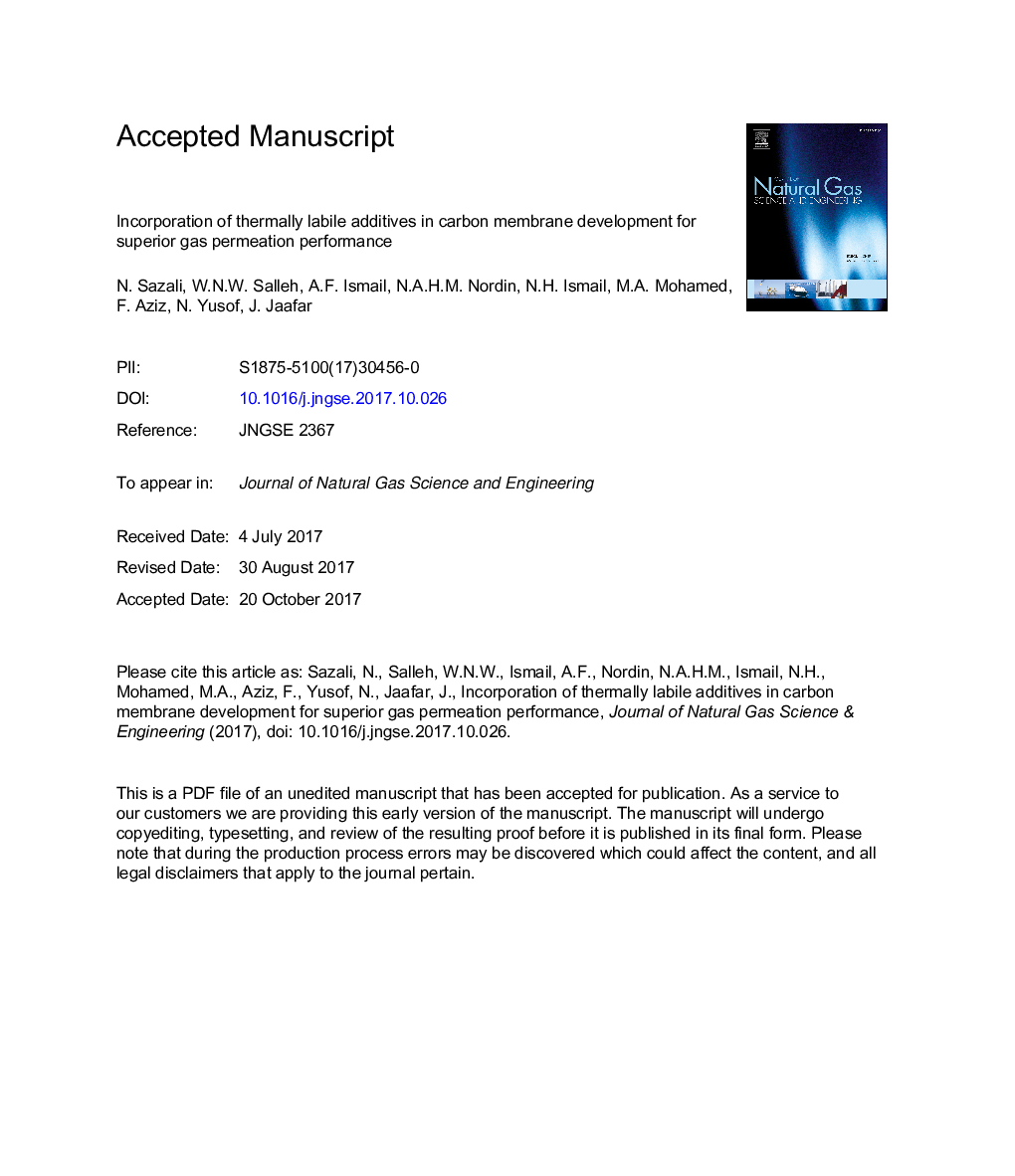| Article ID | Journal | Published Year | Pages | File Type |
|---|---|---|---|---|
| 8128529 | Journal of Natural Gas Science and Engineering | 2018 | 30 Pages |
Abstract
Incorporating thermally labile polymer additives into carbon membrane development is highly practical due to its process simplicity and effective approach. In this study, different polymer composition of thermally labile additives such as polyvinylpyrrolidone (PVP), microcrystalline cellulose (MCC) and nanocrystalline cellulose (NCC) were introduced into the BTDA-TDI/MDI (P84-copolyimide) polymer solution. The P84-copolyimide based carbon tubular membranes were fabricated using dip-coating method and characterized in terms of its thermal stability, structural morphology and gas permeation properties. Initially, the NCC was introduced as a pore performing agent in the carbon membrane fabrication for carbon dioxide (CO2) separation. Our finding indicated that the use of NCC as pore performing agent significantly promoted an increment of pore structure channel in carbon membrane. As a result, the high permeance as well as high selectivity was demonstrated in this study. Pure gas permeation tests were performed using CO2, CH4, O2 and N2 at room temperature. The increment of both gas permeance and selectivity were observed in the NCC-containing carbon membranes prepared with a composition of 7 wt%. The promising CO2/CH4 selectivity of 68.23 ± 3.27, CO2/N2 selectivity of 66.32 ± 2.18 and O2/N2 selectivity of 9.29 ± 2.54 with respect to neat carbon membrane were presented. Thus, upon further investigation, the potential of NCC as thermally labile additive in carbon membrane was assured.
Keywords
Related Topics
Physical Sciences and Engineering
Earth and Planetary Sciences
Earth and Planetary Sciences (General)
Authors
N. Sazali, W.N.W. Salleh, A.F. Ismail, N.A.H.M. Nordin, N.H. Ismail, M.A. Mohamed, F. Aziz, N. Yusof, J. Jaafar,
